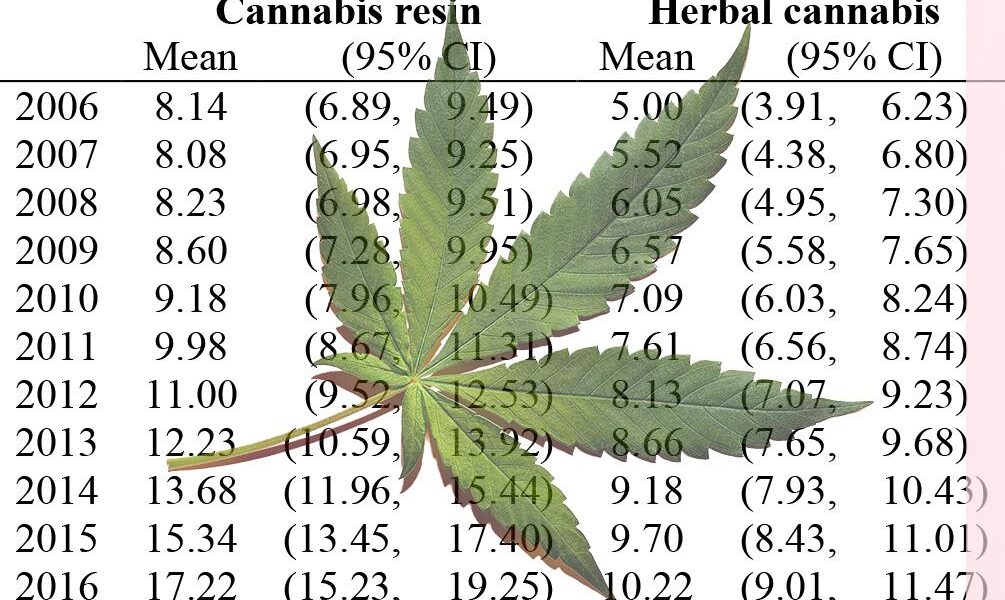The Green Cost: Navigating the Landscape of Cannabis Pricing
As the curtains of prohibition slowly lift across various regions, cannabis has transcended its shadowy past to emerge as a multi-billion dollar industry. This transformation has not only ushered in a newfound acceptance of the plant but has also sparked a complex web of economic implications. From the sun-soaked fields of California to the bustling dispensaries of Canada, the price of cannabis is influenced by an intricate tapestry of factors, including cultivation practices, regulatory frameworks, and consumer demand. But what exactly drives these prices? In this exploration, we will delve into the nuances of cannabis pricing, examining the variables that contribute to its cost while providing insights into how this ever-evolving market reflects broader societal changes. Join us as we unpack the economic realities of this green revolution, revealing a landscape where value is as diverse as the strains themselves.
Table of Contents
- Understanding Price Variations in the Cannabis Market
- Factors Influencing Cannabis Pricing Trends
- Navigating the Cost of Cannabis: Strategies for Consumers
- Future Outlook: Predicting Cannabis Prices in a Changing Landscape
- Q&A
- In Summary
Understanding Price Variations in the Cannabis Market
The cannabis market is a complex ecosystem influenced by a myriad of factors that contribute to price variations. At the core, supply and demand dynamics play a crucial role. High demand, especially in newly legalized regions, can drive prices up sharply. Conversely, an oversupply, where growers produce more than the market can absorb, may lead to price drops. Other factors include:
- Consumer preferences: Different strains and products cater to distinct demographics, impacting their perceived value.
- Quality: Premium, organic products will often fetch higher prices compared to their standard counterparts.
- Regulations: The legal landscape, including tax rates and licensing fees, invariably affects retail pricing.
Moreover, geographical location significantly dictates cannabis pricing. Areas with robust legal frameworks and higher competition often see lower prices. In contrast, markets that are still developing or are heavily regulated may maintain elevated prices due to limited accessibility and distribution channels. Consider the following comparative table illustrating average prices per gram in various regions:
| Region | Average Price per Gram |
|---|---|
| California | $10 |
| Colorado | $8 |
| New York | $12 |
| Oregon | $6 |
Factors Influencing Cannabis Pricing Trends
The pricing trends of cannabis are shaped by a multitude of factors that create complexities in the market. Supply and demand dynamics play a pivotal role; as legal markets expand, the availability of cannabis can fluctuate, affecting prices accordingly. Additionally, seasonal harvests can lead to an overabundance during peak times, resulting in temporary price drops. Other key influences include the methods of cultivation (indoor vs. outdoor), which impact production costs, and the quality of the product, where higher-grade strains command premium prices. Cultivators must also consider regulatory environments that govern taxation and licensing, which can significantly alter the final retail price.
Furthermore, a growing consumer base introduces consumer preferences that directly affect pricing. As awareness of different strains and their medicinal benefits increases, trends may shift towards more sought-after varieties, driving prices higher. Additionally, the competitive landscape influences pricing strategies among producers striving to capture market share while maintaining profit margins. Factors such as marketing expenses, retail distribution choices, and consumer education efforts are also essential. The interplay of these elements creates a dynamic pricing structure that remains fluid in response to the ever-evolving cannabis market.
Navigating the Cost of Cannabis: Strategies for Consumers
When it comes to purchasing cannabis, consumers can benefit from a proactive approach to managing expenses. Here are some practical strategies to consider:
- Buy in Bulk: Purchasing larger quantities often leads to significant savings.
- Stay Informed: Regularly check local dispensary prices and promotions to catch the best deals.
- Loyalty Programs: Join programs that reward consistent customers with discounts and special offers.
- Grow Your Own: If legal in your area, cultivating your own plants can be a long-term cost-saving measure.
Comparing prices among different dispensaries is crucial. Utilizing online platforms can streamline this process. Below is a simple table showcasing average prices from various sources:
| Dispensary | Indica (per gram) | Sativa (per gram) | Edibles (per unit) |
|---|---|---|---|
| GreenLeaf | $10 | $12 | $5 |
| CannaBest | $9 | $11 | $6 |
| Herb Haven | $11 | $13 | $4 |
By implementing these strategies, consumers will not only stretch their dollars further but also enhance their overall purchasing experience. Remember, knowledge is power when it comes to finding value in the cannabis market.
Future Outlook: Predicting Cannabis Prices in a Changing Landscape
As the cannabis industry continues to evolve, various factors will play a crucial role in shaping future price trends. Regulatory changes, market saturation, and consumer preferences will significantly influence pricing dynamics. Some of the key aspects to consider include:
- Legalization Trends: As more states and countries legalize cannabis for medical and recreational use, increased competition may lead to lower prices.
- Market Maturity: A mature market often stabilizes prices, reducing extreme fluctuations.
- Supply Chain Improvements: Advances in cultivation and distribution methods can lower production costs, impacting retail pricing.
Moreover, regional variations will create distinct pricing landscapes. Urban areas with higher demand might see inflated prices, while rural regions may offer more competitive rates. To illustrate potential price fluctuations, a comparison of projected prices across different market conditions can be enlightening:
| Market Condition | Estimated Price per Gram |
|---|---|
| Emerging Market | $10 – $15 |
| Mature Market | $5 – $10 |
| Highly Competitive Market | $3 – $5 |
Understanding these shifts can empower consumers, investors, and businesses alike to make informed decisions as the cannabis landscape continues to transform.
Q&A
Q&A: Understanding the Price of Cannabis
Q1: What factors influence the price of cannabis?
A: The price of cannabis is shaped by a variety of factors, including the quality of the product, cultivation methods, regional supply and demand, and local regulations. Premium strains may cost more due to their rarity or specialized growing conditions, while fluctuations in supply—such as seasonal variations or crop yields—can also affect pricing. Lastly, taxes imposed by state and local governments play a significant role, often increasing the final cost for consumers.
Q2: How do prices vary between recreational and medicinal cannabis?
A: Generally, medicinal cannabis can be somewhat less expensive than recreational cannabis, mainly due to different taxation rates and regulations. However, prices can still vary widely based on the specific product, location, and the patient’s needs. Medicinal users may also have access to discounts or insurance coverage, which can make their costs more manageable compared to recreational users who do not have such options.
Q3: Are there notable differences in cannabis pricing across different states or countries?
A: Yes, cannabis pricing can differ significantly from one region to another. In countries or states where cannabis is fully legal, prices may be lower due to established markets and competition. Conversely, in places with stricter regulations or where cannabis has recently been legalized, prices may be higher due to limited supply. Additionally, illicit markets can still exist, often offering lower prices but at higher legal and safety risks.
Q4: How do different forms of cannabis (flower, edibles, oils) compare in price?
A: Typically, the price of cannabis products varies across forms. Flower tends to be the most affordable option per gram, while concentrates and oils (which require more complex extraction and production processes) can be pricier. Edibles may also carry a premium due to their processing and packaging, along with the inclusion of other ingredients. Each form has its own production costs, which contribute to the overall pricing structure.
Q5: Is the price of cannabis expected to change in the future?
A: While it’s challenging to predict exact trends, several indicators suggest that cannabis prices may stabilize or decrease over time. As markets mature and more growers enter the space, increased competition could drive down prices. However, ongoing regulatory changes, consumer demand, and economic factors will also contribute to future pricing dynamics, potentially leading to fluctuations in both directions.
Q6: How can consumers find the best prices for cannabis products?
A: Consumers looking for the best prices should consider researching various dispensaries, taking advantage of promotional events, and using online resources that track cannabis prices. Joining loyalty programs and subscribing to newsletters can also provide access to exclusive deals. Additionally, comparing product quality and potency is essential, as the lowest price may not always equate to the best overall value.
Q7: Are there ethical considerations related to the pricing of cannabis?
A: Yes, ethical considerations abound in the cannabis industry, particularly around pricing. Issues such as social equity in pricing, accessibility for low-income individuals, and the impact of taxation on consumers are vital discussions. Advocates argue for transparent pricing structures that consider cost barriers, while simultaneously addressing the need for funding public health and safety initiatives related to cannabis use.
—
By engaging with these questions, readers can gain a clearer understanding of the complexities surrounding cannabis pricing and make informed decisions in this evolving market.
In Summary
In the ever-evolving landscape of cannabis, the price tag attached to this versatile plant reflects a complex interplay of factors, from legal frameworks and market demand to cultivation practices and consumer preferences. As more regions embrace legalization, the price of cannabis will likely continue to fluctuate, opening doors to a broader range of consumers and new market dynamics. Whether as a commodity or a cherished herbal remedy, understanding the pricing of cannabis provides insight into both its economic significance and societal impact. As we move forward, remaining informed about these changes will empower us to navigate the cannabis landscape with clarity, curiosity, and a sense of responsibility. Ultimately, the journey into the world of cannabis pricing is not just about the money—it’s about the culture, the community, and the potential that this remarkable plant holds for all of us.



